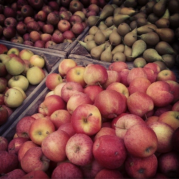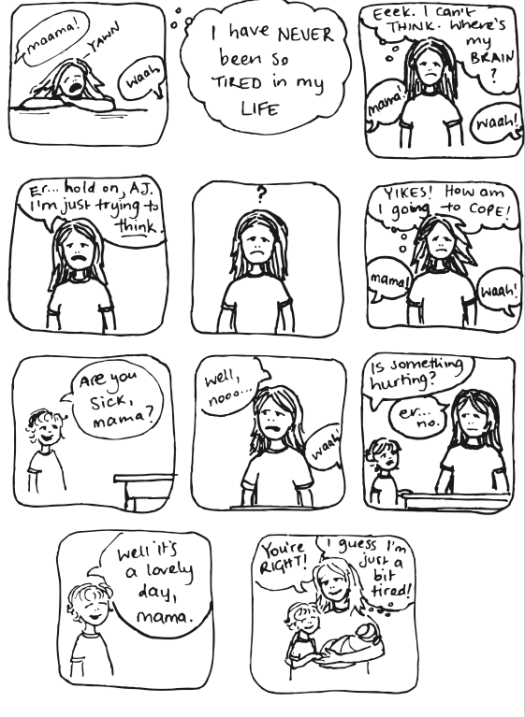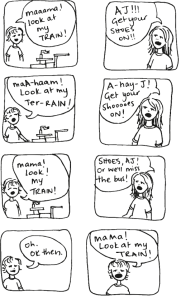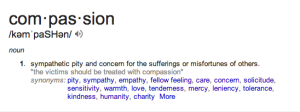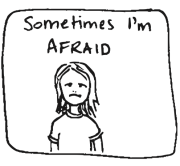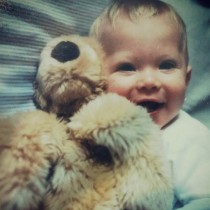I am a writer, and I believe that as our world becomes more liquid modern and saturated with content, we—and our children—need strong, mindful narratives to grasp onto and engage with.
I signed up for the Ready To Lead course because leadership skills are useful for writers who, as thought leaders, can harness words and ideas as agents for change.
But there is another reason I signed up.
Over the past year, I noticed I was becoming overwhelmed and almost paralyzed with my Feels around parenting a mercurial teenager.
The stories we tell
Last summer, I was lucky enough to hear Thich Nhat Hanh speak at Plum Village, and to then accompany him on a walking meditation.
I watched on as my younger child cavorted and chased wildlife through the plum orchard with the middle-grade children … while my older child moved with the teenage squadron: all undercuts and pink-and-blue dip-dyed hair, stuck to each other like velcro, communicating with furtive looks and occasional stifled outbursts of laughter or eye-rolling.
At the time, I wasn’t sure HOW to think about my teenager.
On the one hand, I understand the ‘story’ our culture tells us:
Teenagers are up and down. It’s a difficult time. They need their space.
Yet when we become attached to a story, we start to take it for granted … and it can lose its meaning.
It can also become inaccessible.
‘Teenagers are difficult’ didn’t even begin to provide solace, nor accurately describe my daughter’s situation.
How to love
Like many kids, my older child had had a tough year, and maybe deep down I was hoping she would take the opportunity to—somehow—learn some skills from mindfulness teachings, to begin to separate herself from her emotions.
But I had no idea how this would happen. She had already begun to distance herself from us as parents (which was perfectly normal, and to be expected), and it seemed like all my efforts to communicate with her were falling on deaf ears.
That day, I watched as Thich Nhat Hanh walked and held the small children’s hands. I watched him as as the children came and went like butterflies: he let them come and go, and he patiently kept walking, and smiling.
And I cried at how simple he made love look.
Fair weather
As the week progressed, my child relaxed … so I relaxed.
But it was a fair-weather relief.
Because as soon as we were back home and it wasn’t a smooth-sailing holiday environment any more, I found myself floundering. My so-called mindful way of being seemed almost ineffectual as the stormy teenager returned.
It became pretty clear that I was the one who needed to learn some skills. And fast.
Show, don’t tell
I’ve known intellectually for many years that a person can’t possibly be the best they can be if they’re tied up in ‘The Feels’, but up until the past year it was all theory. Until the past year, I hadn’t been in a situation head-on, where it was imperative that I deal with ‘my side of the street’ in order to be fully and skilfully present for someone else.
Over the course of Ready To Lead, I’ve learned how to be mindful of—and release—some very big emotions.
As an introvert—and someone who avoids conflict like the plague, rarely externalising strong emotions—this is a big step.
I now have some concrete tools and processes that I can apply to my own life, to become more skilful as a thinker, as a communicator, and as a doer.
I’ve seen the difference. And I believe that, step by step, it will get easier as I begin to ‘show’ my teenagers how to be mindful … rather than just dole out meaningless stories and advice.
A point about The Feels
In teenagers, the amygdala—the part of our brain that governs our flight or fight response and our ability to correctly read others’ emotions as well as our own—is relatively outsized. Teens often can’t even read others’ facial expressions accurately.
Which is partially how miscommunications occur between parent and child. And messy communication often leads to unskilful emotional reactions, or (in Tumblr-ese) The Feels.
I’ve seen this #IRL with my daughter and her peers, and I remember it from my own teenage years. It can feel like you’re on tenterhooks the whole time. It can also feel like drowning, like there’s no way out of the ‘bad’ Feels.
Some teens are equipped to deal with this better than others, and there are numerous social, genetic, cultural and economic factors contributing to how a person responds to the life they have.
Where to begin?
1. I find it helpful to read what experts have to say around the topic, so I’ve included a page of resources, and I hope these will be helpful to some, as they have been for me. (It is a work in progress, and I will add other resources as I encounter them.)
2. From my own experience, a good place to start has been to notice my emotions as they arise, and get in the habit of asking myself The Four Questions.
3. Also, a short, habitual daily meditation helps exercise my mental ‘muscles’. It’s not always easy, but I do it, even when I’d rather be anywhere else but with my own surging mind.
Ultimately, I believe all this can only be of benefit to me—body and soul.
And, even if it doesn’t directly help my children find their way, then at least in practicing non-attachment and keeping my communication with them clean, I will not be stirring up or muddying the already turbulent waters that they are naturally trying to navigate.
Thanks
I thank Emily Bennington and Debra Hickok for their guidance over the past five weeks. Because it’s one thing to be learning to navigate your own boat … but it’s something altogether golden when you know there are others out there, like Emily and Debra, who willingly pass on their wisdom, hand over their maps … and give their time and love to help others be the best they can be—just because.







